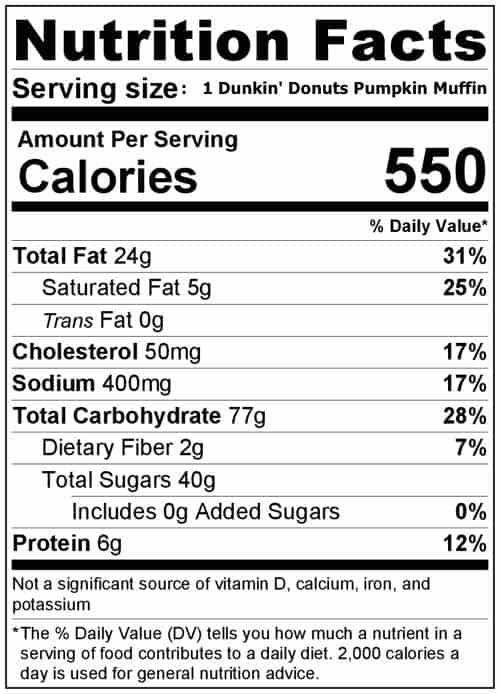

When the Center for Science in the Public Interest, an advocacy group for nutrition and health, independently tested Olive Garden's calorie claims, it found major discrepancies. But lab analysis of calorie claims has shown that restaurants' nutrition totals can be wildly inaccurate, even in the case of major chains. Proponents of the law argue that restaurant menus usually fall within the ballpark of accuracy.
#DUNKIN DONUTS CALORIE CALCULATOR FREE#
The association has challenged the rule in court, claiming it conflicts with federal regulations and violates the commercial free speech rights of the food companies. "It's indeed a rather extensive loophole," said Chuck Hunt, executive vice president at the New York State Restaurant Association. The New York City law, however, does not specify a degree of precision. The federal regulation concerning calorie counts on food sold in stores requires the number on the label be within 20 percent of the food's actual content. So when it comes to calories on the plate and calories on the menu, how close is close enough? I've got extra bacon in the salads, extra everything." "I figure if they're paying $7 for a meal, people want to get their money's worth. "My small fries look like medium fries and my medium fries look like large fries," she said. Just ask Quanisha Stackhouse, who works at Nathan's. When food preparers toss in a little extra cheese or a little more oil, nutrition data can be thrown off by hundreds of calories. "At a mid-level restaurant, will every single chicken breast be three ounces? Probably not. "That's the trouble with food - you can't really get it down to a science when it's made to order," said Marissa Lippert, a registered dietician in Manhattan. Calorie data on New York's menus are subject to far less scrutiny than the nutrition labels on products sold in grocery stores.įor one thing, the calorie content of meals made to order can vary significantly, even at restaurants with standardized preparation methods. Meanwhile, consumers will need to realize that all calorie counts are not created equal. Many nutritionists laud the city's efforts to help New Yorkers eat better, but critics say the law was hastily crafted and will be impossible to enforce. But while mandating that calorie data be displayed, the law does not address many issues surrounding the accuracy of the counts. Concerned about the city's obesity epidemic, the Board of Health reasoned that people might shun some foods in favor of healthier ones if they knew just how many calories lurked beneath a Big Mac's special sauce and sesame seed bun. The rule that went into effect on March 31 requires restaurants with 15 or more franchises nation-wide to post calorie data on menus. Some consumers can hardly believe their eyes.

Since calorie counts appeared on menus across the city, New Yorkers have feasted on the cornucopia of data. "I could eat a whole, good meal for that many calories." "It's shocking," said Loreta Gemeviciute of Manhattan, who used to buy Starbucks' Venti Mocha Frappuccinos until she glanced at their 500-calorie stats. a sandwich, you can see how it compares to other choices.Some snack items pack in a meal's worth of calories.įive hundred and ten calories in a corn muffin at Dunkin' Donuts? One thousand one hundred and fifty calories in a Garden Omelet at IHOP? And 2,210 calories in a Bloomin' Onion appetizer at Outback Steakhouse?


 0 kommentar(er)
0 kommentar(er)
